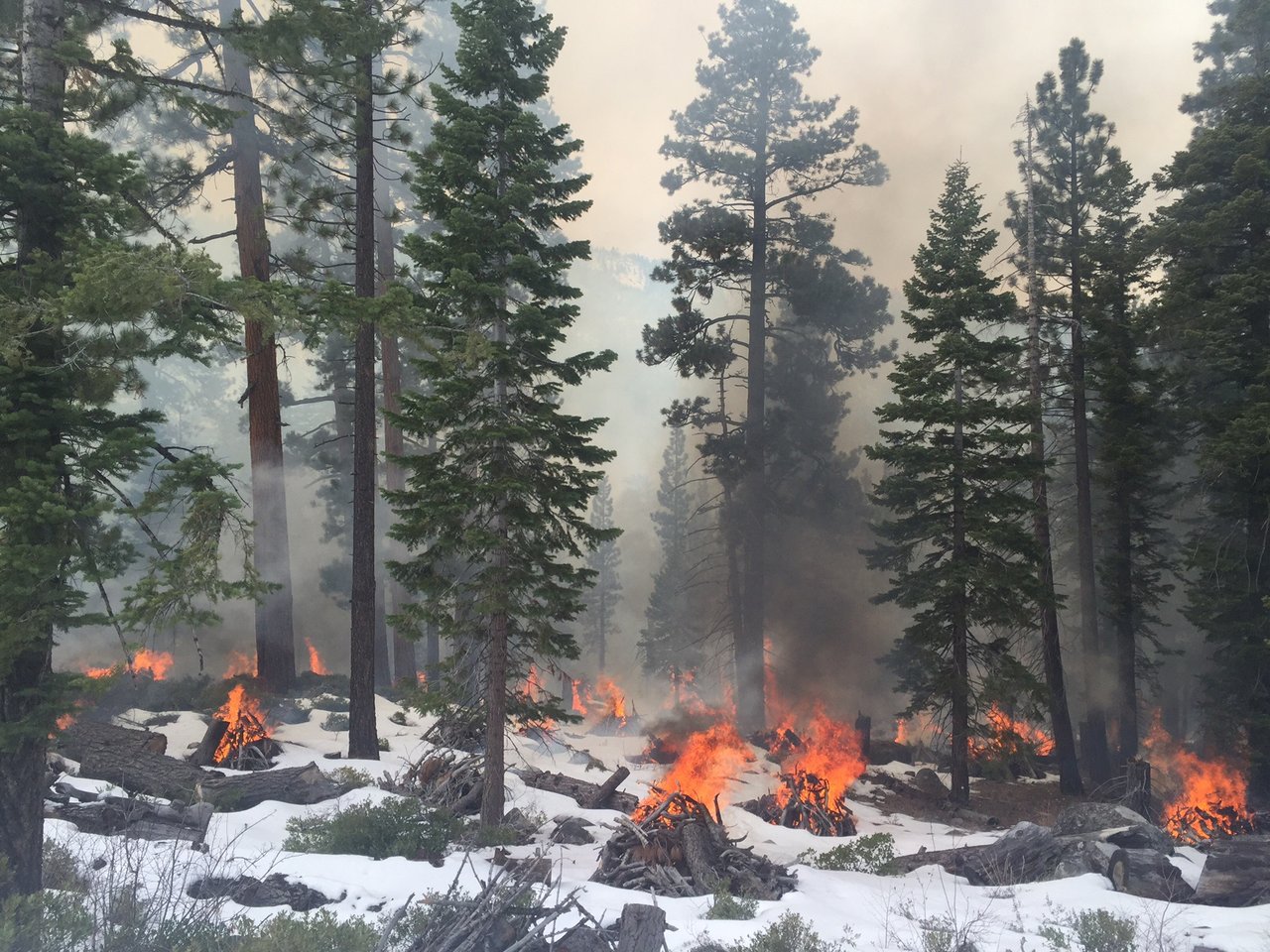(CN) --- Rich Adams, a forester with California State Parks, stood at the ready to initiate a prescribed burn within the boundaries of Buron Creek State Park.
The relatively small park on the outskirts of Tahoe City is important for forest managers because it lies within what they call the urban/wildland interface. Heavily forested lands near human habitation are particularly important to keep thinned, the theory goes, to prevent fires that occur naturally or otherwise in wilderness areas from spreading into towns where they destroy property and lives.
So Adams and his cohorts of firefighters stood ready to perform an understory burn, which is both a novel and an ancient theory of forest management predicated on introducing fire into the landscape in a controlled manner to eradicate excess shrubbery and young trees and prevent the type of large out-of-control fires that have charred California landscape over the last decade and longer.
“All of the desired conditions were in alignment except for one,” Adams said.
The day was perfect in terms of lack of wind, fuel moisture content for the surrounding vegetation, temperature, humidity. But one factor caused the whole thing to be called off.
“The day before the burn, we discovered a mother bear and at least one really small bear cub living in the burn plot,” Adams said. “They were well hidden, and it became apparent that they wanted to stay exactly where they were. I canceled the burn for protection of wildlife.”
It would be hard to find someone to disagree with the decision, but it underscores the difficult complexity of prescribed burning in the forests of California, even as the state appears poised on the brink of an active fire season.
On the South Shore, Tod Flowers, the hazardous fuels program manager for the Lake Tahoe Basin Management Unit, was set to undertake a prescribed burn in and around aspen stands in the forests outside of the unincorporated town of Meyers.
“Aspen stands are a fire-adapted species, but they are in decline in the Lake Tahoe Basin because of a lack of naturally occurring fire,” Flowers said.
In natural conditions, prior to the arrival of European settlers to the Sierra Nevada, the forest experienced frequent bouts of low-intensity fire. But since people have suppressed fire in the forest, overgrowth of trees has occurred so that --- though fewer fires occur overall --- when fires do spark they do so with a higher degree of intensity in terms of heat and reach.
For aspen, fire suppression means conifers that would normally be cleared out by low-intensity ground fire are allowed to flourish.

“Absence of naturally occurring fire, shade-tolerant conifers encroach and overtake aspen stands and the aspens will die out,” Flowers said.
So Flowers has secured a federal grant to carry out a combination of pile burnings and understory burn around aspen stands in the Christmas Valley, near Genoa Peak and the Big Creek Meadow, all within the Lake Tahoe Basin.
The only problem was California had a dry winter. The forest is experiencing very dry conditions that make such burning difficult.
“We can’t operate in conditions that potentially threaten surrounding communities,” Flowers said.
And when Flowers and his crew prepared to carry out the burn on May 12, that is exactly what they faced --- threatening conditions.
The classic example of what prescribed fire managers are trying to avoid occurred in Nevada in October 2016. The Nevada Division of Forestry conducted understory burning and believed the fire was out after buttoning up mop-up operations. However, overnight a fire sparked and spread by high winds, leaked into a neighborhood between Reno and Carson City and destroyed 23 houses and 17 other structures.









